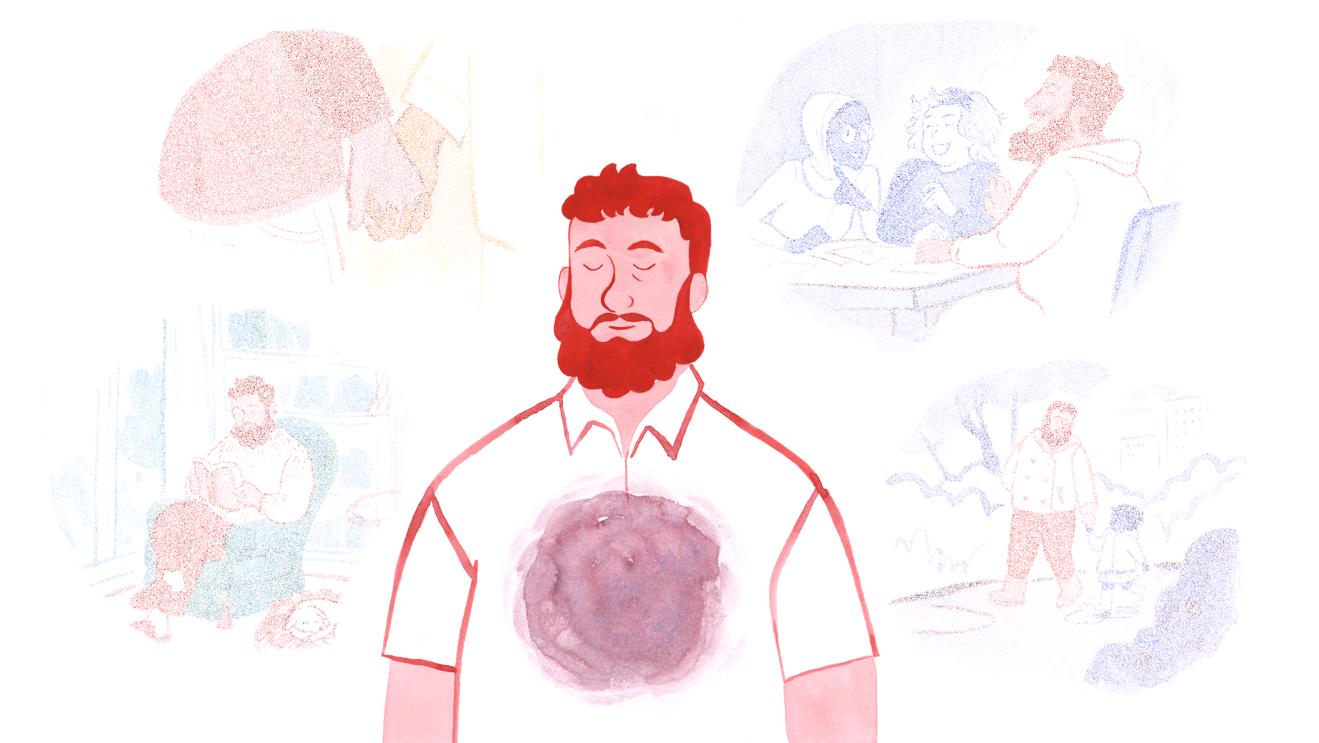
January 23, 2020, by Lexi Earl
A Creative Approach to Engaging with Male Eating Disorders: Animating the Patient-Doctor Encounter in Clinical Settings
This post is written by Dr Richard Vytniorgu, Impact Research Fellow, School of Cultures, Languages, and Area Studies.
To animate something means to give shape to that which is hidden, inert, silenced. To be animated is to demonstrate movement rather than rigidity, a liveliness in place of absence.

Together with the animation studio Woven Ink, Dr Heike Bartel and her team are developing an animation that seeks to give voice to the lived experiences of men now in recovery from eating disorders. In a previous post Dr Bartel explained in an interview with Dr Lexi Earl how she came to develop her interest in the experience of food and how, from a literary perspective, she is now branching out into innovative interdisciplinary terrain in the field of health humanities.
The AHRC-funded ‘Hungry for Words’ project is about articulating, communicating, and understanding issues around food, particularly in a clinical setting where GPs may not be aware of the dimensions of male eating disorders that require their own particular response. The aim is to equip GPs with the knowledge and skills necessary to improve the experience of men and boys with eating disorders who reach out to their GPs for help.

At the moment we have a group of seven men with lived experience, all in recovery, and all talking openly about their struggles. We are working together with an animation team called Woven Ink, who have done work in the field of eating disorders before, and we are currently translating those experiences of men into a training animation for GPs. Questions we put to these men were:
- Why was it so difficult to disclose to the GP or practice nurse what you thought or guessed was wrong with you?
- What would have helped?
- What definitely did not help?
Once we had responses to these questions, we analysed them for common themes and distinctive experiences and began to create the ingredients for a short video which would animate these authentic voices and give life to them in visual and narrative form.
As Una Foye, Co-I on the Hungry for Words project explains:
A big part of the process for me was spending time reading the content multiple times, each time taking notes and making memos and highlighting the words that pop out of the page and things that keep coming up. As a visual person I usually do this on physical paper with lots of coloured pens with each colour representing similar themes or key points. It was important for us to keep the men’s own words and experience in mind while working with the transcript from these interview days. I could often hear the voices as I read back and remember how it felt on the day which is why it was right for us to work with verbatim transcripts to pull out quotations rather than rephrasing or scripting something ourselves, as this would lose that real authentic voice that makes this work so genuine and different.
Once the transcript was turned into a script for the animation, we passed the baton on to Woven Ink, who took charge of turning our materials into a powerful animation, with the help of animator Mathilde Laillet.

Jess Harvey and Isolde Godfrey at Woven Ink explained to us:
It’s always very humbling to be approached to work on a project of this nature, to be invited in, and entrusted to be part of holding and creating the space to amplify the voices and experiences of the men we’ve been working with; especially when the experiences they’re sharing, are so deeply personal.
And to be able to work alongside such passionate, dedicated, knowledgeable collaborators like Heike, Una and the rest of the team, only adds to the nourishment of working on a project like this.
We aim to avoid being didactic in how messages are put forward in the animations we produce. So for this project, with GPs being our primary audience, our aim is simply to provide a space, in which they can access these real men’s’ lived experiences, and to take from it anything they may feel is helpful or useful when working with men they may encounter in their surgeries in the future.
(We are obviously quite biased), but we feel animation as a medium, is an incredibly powerful tool, for sharing narratives like this, elements around anonymity and safeguarding definitely come into to the mix, but in being outside the constraints of real life, we have the freedom to create and explore metaphors, and mix between the literal and abstract, to help portray and represent these men’s experiences. We hope it proves helpful and insightful.
It’s our expectation and hope that the animation will help GPs enter into the lived experience of the people they are likely to meet in the course of their surgeries. Rather than restricting our intervention to recommendations, an animation brings the subject into the aesthetic realm, where feelings and experiences become animated in tangible characters with stories to tell. What we then understand about a set of issues becomes more holistic, intimate, and less abstract.
As researchers, the experience of channelling research in the health humanities into an aesthetic medium has been eye-opening. We look forward to exploring the benefits of this intersection between the arts and sciences in the months to come.
The animation will be launched to an audience of GPs and beyond in late January 2020. Watch this space!
Richard Vytniorgu is Impact Research Fellow in the School of Cultures, Languages, and Area Studies at Nottingham, focusing on developing impact in the school, especially for REF. As a literary scholar he has interests in life writing, aesthetics, and wisdom. His monograph on literary experience and wisdom is now out in paperback.
No comments yet, fill out a comment to be the first

Leave a Reply